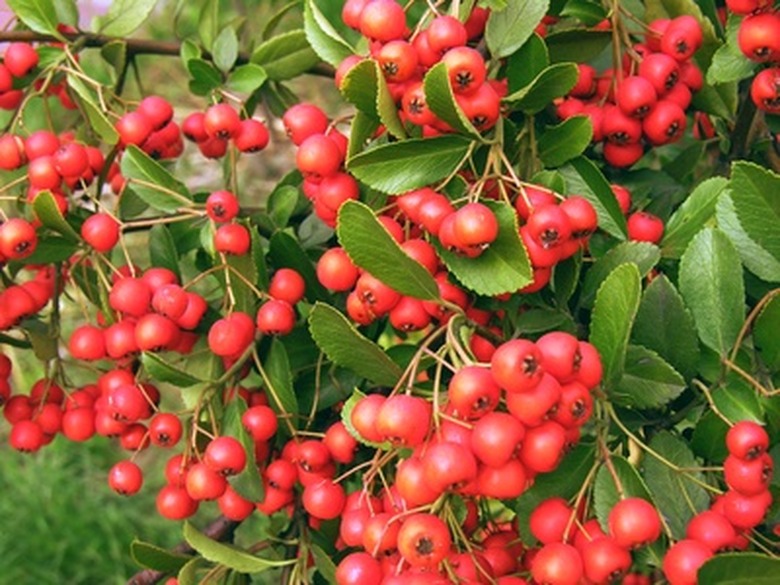Trees That Bear Red Berries In Winter
Trees that bear red berries or fruits in winter become especially ornamental after a snowfall. Unfortunately, hungry songbirds pose a great challenge to enjoying trees with red berries in winter. Some species include separately gendered plants, and making sure you grow both ensures the female trees display the decorative berries annually.
Hawthorns
Hawthorns, or thornapples (Craetagus spp.) ripen their red to red-orange fruits in autumn, but as the foliage drops, the fruits take center stage visually. They persist into early and midwinter until extreme cold shrivels them or they become a meal for a bird. Two examples of hawthorn trees include the green hawthorn (Craetagus virdis) and Washington hawthorn (Craetagus phaenopyrum). Just remember to enjoy the fruits from a distance–the branches of these trees arm themselves with stiff, prickly thorns.
- Trees that bear red berries or fruits in winter become especially ornamental after a snowfall.
- ripen their red to red-orange fruits in autumn, but as the foliage drops, the fruits take center stage visually.
Hollies
No winter holiday celebration would be complete without sprigs and leaves of hollies. Holly (Ilex spp.) plants are dioecious, meaning plants bear only male or female flowers. In order for female trees to display fruits, a male tree nearby must supply the pollen for bees to transport to female blossoms. A wealth of holly species exist for a garden, but larger-sized "trees" include English holly (Ilex aquifolium) and American holly (Ilex opaca), both of which grow slowly.
Igiri Tree
You will pay little attention to the Igiri tree (Idesia polycarpa) unless it is winter when its light-gray barked trunk and branches dangle drooping clusters of red berries. This species, like hollies, is dioecious, with plants being either male or female. Only female trees bear the ornamental berries, but at least one male tree must grow nearby to ensure the female blossoms get pollinated.
- No winter holiday celebration would be complete without sprigs and leaves of hollies.
- Only female trees bear the ornamental berries, but at least one male tree must grow nearby to ensure the female blossoms get pollinated.
Crabapples
We admire crabapples (Malus spp.) for copious displays of fragrant flowers in springtime, but fail to appreciate the often red fruits that remain in late fall to midwinter. Birds and rodents relish the small tasty fruits that are less than 1/2-inch in diameter, but make sure to select red-fruiting varieties, as some bear orange or yellow fruits. Some years, when winters are not harsh, wildlife does not strip the fruits of crabapples until midwinter.
Mountain Ashes
All mountain ash species (Sorbus spp.) grow and look best in cool climate regions. Plus, they tend to succumb to borer and canker problems. If you can grow a mountain ash with ease, you obviously enjoy the red clusters of fruits into winter. Delectable to songbirds, the fruits are grand on four species: whitebeam mountain ash (Sorbus aria), European mountain ash (Sorbus aucuparia), American mountain ash (Sorbus Americana) and the Korean mountain ash (Sorbus alnifolia).
- We admire crabapples (Malus spp.)
- Birds and rodents relish the small tasty fruits that are less than 1/2-inch in diameter, but make sure to select red-fruiting varieties, as some bear orange or yellow fruits.
References
- "Dirr's Hardy Trees and Shrubs"; Michael A. Dirr; 1997
- Texas A & M University: Small Trees
- Purdue University: Plants With Winter Interest
- "Dirr's Trees and Shrubs for Warm Climates"; Michael A. Dirr; 2002
